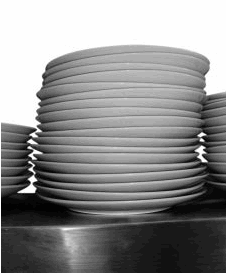The Economics of Nudging
by Brandon Fuller A few months ago, Aplia was acquired by Thomson Learning. Looking over my first Thomson pay stub, I noticed that the company had automatically diverted some of my earnings to their 401(k) retirement plan. Though enrolled by default, I was free to opt out. Satisfied with my enrollment, I did nothing and stayed in. Like most well-intentioned people, I want to save a sensible portion of my earnings. The trouble is, when we are left to opt in to retirement plans on our own, there's a good chance we'll never get around to it. People want to save more, but many of us never do. With automatic enrollment, our employers nudge us toward the desirable outcome.
A few months ago, Aplia was acquired by Thomson Learning. Looking over my first Thomson pay stub, I noticed that the company had automatically diverted some of my earnings to their 401(k) retirement plan. Though enrolled by default, I was free to opt out. Satisfied with my enrollment, I did nothing and stayed in. Like most well-intentioned people, I want to save a sensible portion of my earnings. The trouble is, when we are left to opt in to retirement plans on our own, there's a good chance we'll never get around to it. People want to save more, but many of us never do. With automatic enrollment, our employers nudge us toward the desirable outcome.Thomson's default enrollment policy is possible because of legislation passed by Congress and the president in 2006. This new federal law preempts state laws that don't allow companies to withhold wages without employee consent. Notice that the law doesn't take away my 401(k) choices, it just allows Thomson to present them in a different way. Rather than deciding to opt in to my company's retirement plan, I have to decide whether to opt out. I still exercise the final say.
As New York Times columnist David Leonhardt has pointed out in two recent columns, appropriately placed nudges can do more than encourage retirement saving. Leonhardt applies the economics of nudging to dieting, education, and healthcare. Read his columns to find out more (one here, and another here).
Discussion Questions
1. According to Cornell marketing professor Brian Wansink, how does the size of your plate affect the size of your appetite? How do the contents and organization of your kitchen give you cues about what and how much to eat?
2. How might antique dinnerware help people cut down on calories? In what other ways can people design and stock their kitchens to provide a nudge toward healthier decisions?
3. How did Dr. Michael Gropper's rule about the default position of hospital beds lead to a big reduction in ventilator-associated pneumonia at his San Francisco hospital?
4. How did Yale economist Justine Hastings' experiment simplify the school choice application process for parents in the Charlotte-Mecklenburg School District of North Carolina? What problems do the Medicare Part D program and the State Children's Health Insurance Program share with the school choice program in Charlotte?
5. A cue in your kitchen that nudges you toward healthier choices is one thing. State-sponsored nudges are a bit different. A program in Missouri allows compulsive gamblers to sign a blacklist that bans them from casinos. If they're caught gambling, they face arrest and confiscation of winnings. The program helps keep addicts out of casinos, but it involves state coercion. Is this type of nudge really "libertarian paternalism"?
For more on the economics of nudging and libertarian paternalism, check out Jim Holt's article in the New York Times.
Labels: Behavioral Economics



<< Home